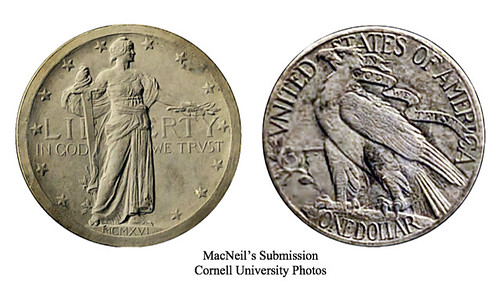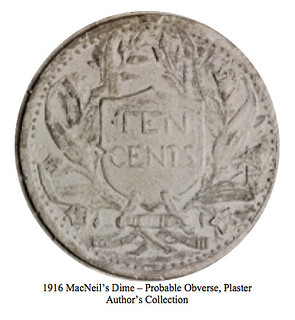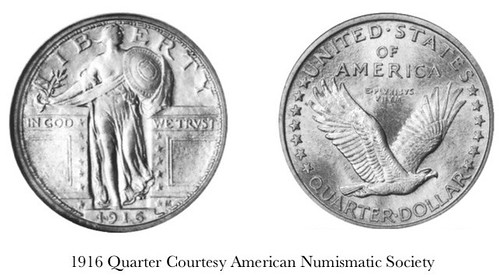
PREV ARTICLE
NEXT ARTICLE
FULL ISSUE
PREV FULL ISSUE
MORE ON MACNEIL'S MODELSJim Haas is the author of Hermon Atkins MacNeil: American Sculptor In the Broad, Bright Daylight. He submitted these thoughts on MacNeil and his model for the Standing Liberty Quarter. Thank you! -Editor
As E-Sylum readers know from my submissions, MacNeil was also a gifted medalist. He had excellent mentors and teachers one among them his uncle was Henry Mitchell of Boston. He along with St. Gaudens, who championed MacNeil's career, was charged in 1891 with selecting the new silver coinage from submitted designs. They found none that were deemed worthy and Charles E. Barber got the job. As acknowledged in The Controversial Quarter, MacNeil did study in Paris. In June 1888 after completing his second year of teaching at Cornell University, he took himself to Paris. There he studied under Michel-Marie-Antoine Chapu, one of France's foremost medalists and one of his favorite teachers. Chapu liked one of his sculptural works so much that he encouraged him to submit it to the salon of 1890. Irene MacDowell was his first model for Miss Liberty; Doris Doscher was his second. Born in New Jersey in 1881, MacDowell's maiden name was Beer. Her father died in 1888 whereupon a year later her mother married William Weitling who in time moved his family to College Point, home of Hermon MacNeil. Irene married George I. MacDowell in April 1903 and the couple lived with her parents until moving, prior to 1915, to the village of Rock Tavern in upstate New York, Orange County. MacNeil would have been well acquainted with William Weitling because by 1915, he had risen to the vice-presidency of the rubber firm founded by Conrad Poppenhusen at which time MacNeil was on the Board of Control of the Poppenhusen Institute an adult education school founded by Poppenhusen in 1868. William Weitling served along with him. According to newspaper notices, Irene would occasionally return to visit her parents in College Point, this making probable that on one of those visits she was MacNeil's model as was published in the reports of her death in 1973. It can only be assumed that with her work with MacNeil completed, she returned to her home in Rock Tavern with her daughter who was born in 1914.
It was not uncommon for a sculptor to make use of more than one model for a particular figure and for reasons known only to MacNeil, he focused on Doris Doscher. Perhaps it was because as he was quoted in an interview,
At the time of her death, it was written that MacDowell had been both a model and actress. According to
a story published three months before her death she had been the model for the figure of Victory in Albany's
Soldiers and Sailors Memorial. The same had been said of Doscher. In the obituaries of both women their acting
careers were noted and that their husbands had been MacNeil's tennis partners, a sport at which Hermon
excelled. Between 1915 and 1917 his name appeared in newspaper articles reporting success in various
tournaments, but not that Messr's Doscher or MacDowell had ever played with or against him. Irene's husband
George was the son of a 19th century actor, Melbourne MacDowell, but for a variety of reasons, it appears he
had little to do with his father. One 1973 report said that her husband would not have approved of her being
either an actress or a model. In no reportage contemporary with the release of the Quarter was Irene MacDowell
ever referred to as the Liberty Girl. Doscher, however, was an actress as well as a model and was referred to in
various newspaper articles as the One thing is for certain, MacNeil's Quarter remains one, if not the best, of America's most beautiful coins.
To read the earlier E-Sylum articles, see:
Wayne Homren, Editor The Numismatic Bibliomania Society is a non-profit organization promoting numismatic literature. See our web site at coinbooks.org. To submit items for publication in The E-Sylum, write to the Editor at this address: whomren@gmail.com To subscribe go to: https://my.binhost.com/lists/listinfo/esylum All Rights Reserved. NBS Home Page Contact the NBS webmaster 
|





